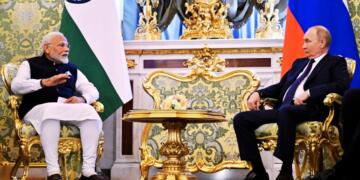The United States has extended an invitation to Pakistan’s Army Chief, General Asim Munir, to attend its annual US Army Day celebration — a move that’s subtle but strategically significant. While such diplomatic gestures are common, this one has raised eyebrows in New Delhi, Tehran, and Beijing alike. For Washington, it may be about more than just ceremony — it may be a calculated effort to keep Pakistan close amid rising regional tensions, especially with Iran. But it also has implications for India.
What Is US Army Day?
US Army Day, marked on June 14, commemorates the establishment of the United States Army in 1775. While not widely celebrated by the public, it’s an important ceremonial event within military and diplomatic circles. On this occasion, the U.S. sometimes invites senior foreign military officials, particularly from nations it wants to build or maintain defense ties with.
This year’s invitation to General Munir, however, seems to be more than just tradition. It’s being interpreted as a message — one that suggests Pakistan still holds value in Washington’s evolving regional strategy.
The Message to Pakistan’s Military: You’re Still Relevant
Despite Pakistan’s internal chaos — a weakened civilian government, economic turmoil, and increasing international isolation — the U.S. appears to be reaffirming ties with its most powerful institution: the military.
The Pakistan Army has long been Washington’s primary channel for influence in Islamabad. By inviting Gen. Munir, the U.S. is signaling it’s not entirely stepping away from this long-standing relationship — and that it may still have a role for Pakistan to play in the region.
The Iran Angle: Strategic Depth
One of the key reasons analysts believe this invitation matters is its potential connection to U.S.-Iran dynamics.
As Washington looks to counter Iranian influence across the Middle East — from Iraq and Syria to the Red Sea — having a military relationship with Pakistan offers a quiet but strategic lever. Pakistan shares a long, sensitive border with Iran and sits on the edge of several flashpoints.
Here’s how the U.S. might be thinking:
Border Monitoring: Pakistan could assist with intelligence-sharing or surveillance on Iranian activities near the shared border.
Proxy Network Disruption: With various Iranian-aligned groups active in the region, Pakistan could be helpful — even indirectly — in disrupting logistics or movements.
China Angle: Pakistan is heavily tied to China via CPEC. The U.S. may want to maintain enough influence to prevent Pakistan from drifting fully into Beijing’s — and by extension, Tehran’s — orbit.
India’s Perspective: A Strategic Red Flag
For India, this invitation is not just a courtesy call — it’s a strategic signal that may raise concerns.
Mixed Signals from Washington: India has steadily built a close defense and strategic partnership with the U.S., based on shared interests in countering China and promoting Indo-Pacific stability. So, a U.S. gesture toward Pakistan’s military — especially amid ongoing tensions over terrorism, Kashmir, and cross-border militancy — may feel like a contradiction.
Pakistan’s Global Relevance Revived: India has worked hard to isolate Pakistan diplomatically, especially on issues related to terror funding and cross-border militancy. An invitation like this could be seen as a subtle rehabilitation of Pakistan’s military image on the world stage — which doesn’t align with India’s strategic goals.
Wider Regional Calculations: If the U.S. is quietly repositioning Pakistan as a counterweight to Iran or China, India may feel sidelined in some regional strategies — particularly those involving Afghanistan, Central Asia, or the Middle East.
Defense Balancing: This could also be a message to India that Washington will keep its options open — a reminder that U.S. partnerships, even strategic ones, are rarely exclusive or unconditional.
A Risky Balancing Act for Pakistan
While the invitation may be welcomed in Rawalpindi, it comes with its own complications:
Iran will watch closely and could respond with diplomatic or even border-level pressure.
China may feel provoked, especially if it senses Washington trying to pry Pakistan away from Beijing’s influence.
Domestically, the Pakistani military could face criticism for aligning with the U.S. again, especially given public sensitivities after decades of conflict in the region.
The invitation to General Munir itself is a geopolitical signal.
For the U.S., it’s about keeping options open — using Pakistan’s geography and military structure as a potential tool in its strategic playbook against Iran, and perhaps as a small hedge against China. For Pakistan, it’s a chance to step out of isolation, but at the cost of navigating some dangerous diplomatic terrain.
For India, it’s a reminder that even close partners like the U.S. may still play multiple hands in the region — and that New Delhi will need to stay agile, assertive, and engaged to protect its interests as global power dynamics continue to shift.





























